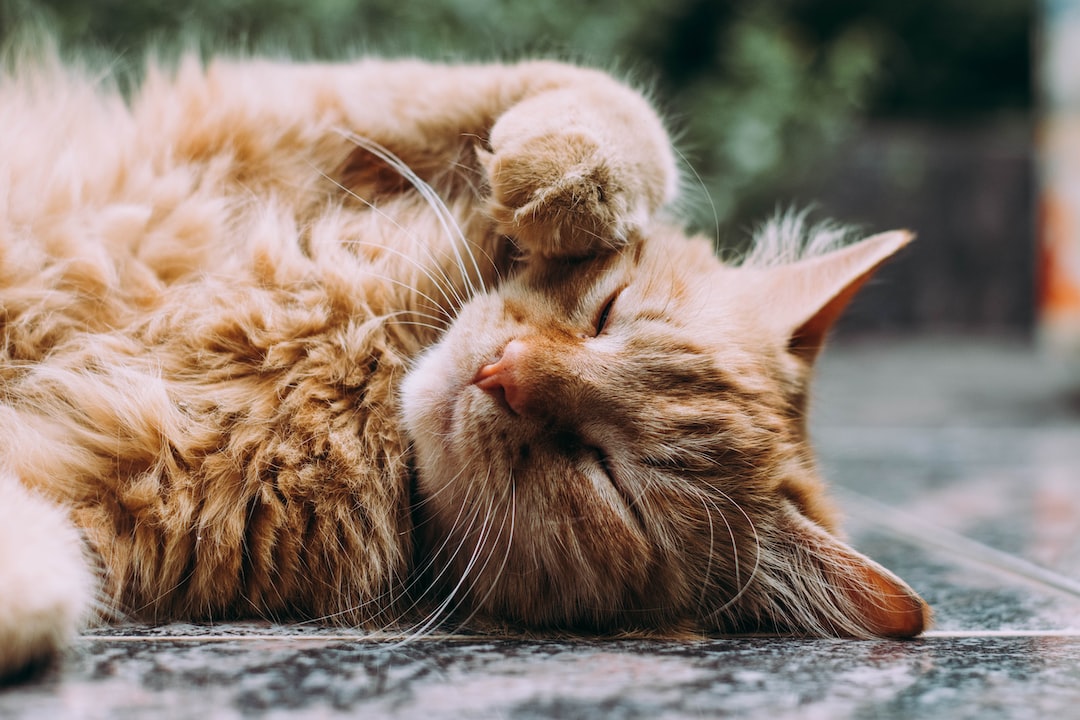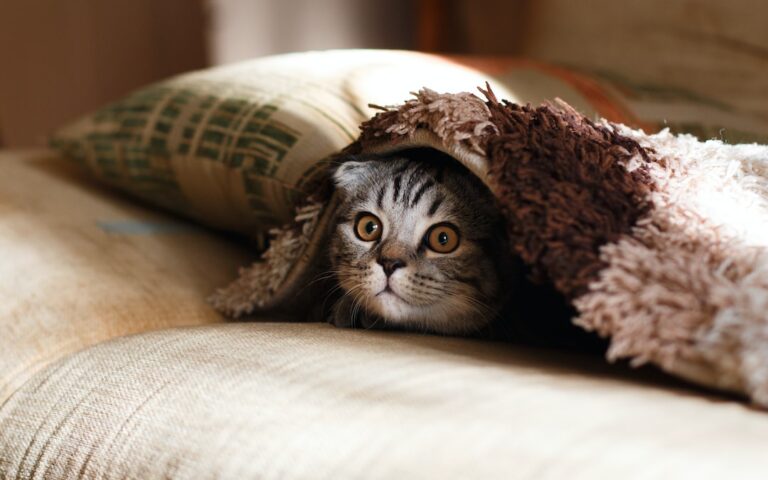Introduction
Understanding cat behavior is crucial for successful training. Cats have their own unique ways of communicating and interacting with the world, and by understanding their behavior, we can effectively train them and address any behavioral issues they may have. Whether you’re trying to teach your cat to use the litter box, stop scratching the furniture, or get along with other pets, having a solid understanding of cat behavior will greatly increase your chances of success.
Understanding Your Cat’s Behavior: The Key to Successful Training
To effectively train your cat, it’s important to understand their behavior and how it affects their training. Cats are independent animals with their own set of instincts and natural behaviors. By observing and interpreting their behavior, you can better understand their needs and motivations.
One important aspect of cat behavior is body language. Cats use their body language to communicate their feelings and intentions. For example, a cat with its tail held high is usually feeling confident and friendly, while a cat with its tail tucked between its legs may be feeling scared or anxious. By paying attention to your cat’s body language, you can better understand their emotional state and adjust your training methods accordingly.
Another important aspect of cat behavior is their natural instincts. Cats have a strong instinct to scratch, hunt, and mark their territory. Understanding these instincts can help you address common behavioral issues such as scratching furniture or aggression towards other pets. By providing appropriate outlets for these instincts, such as scratching posts and interactive toys, you can redirect your cat’s behavior in a more desirable way.
Identifying Common Bad Habits in Cats and Their Causes
Cats, like any other animal, can develop bad habits. Some common bad habits in cats include scratching furniture, biting, and aggression towards other pets or people. It’s important to identify the causes of these behaviors in order to effectively address them.
One common cause of bad behavior in cats is boredom or lack of stimulation. Cats are natural hunters and need mental and physical stimulation to stay happy and healthy. If a cat is not provided with enough opportunities for play and exercise, they may develop destructive behaviors such as scratching furniture or chewing on household items. Providing your cat with plenty of toys, scratching posts, and interactive playtime can help alleviate these behaviors.
Another common cause of bad behavior in cats is fear or anxiety. Cats are sensitive animals and can easily become stressed in certain situations. This stress can manifest as aggression towards other pets or people, or even as litter box problems. Identifying the triggers for your cat’s fear or anxiety and providing a safe and secure environment can help alleviate these behaviors. Additionally, using positive reinforcement training techniques can help build your cat’s confidence and reduce their anxiety.
Setting Realistic Goals for Behavior Modification
When it comes to behavior modification in cats, it’s important to set realistic goals. Changing a cat’s behavior takes time and patience, and expecting immediate results can lead to frustration and disappointment. By setting realistic goals, you can track your cat’s progress and celebrate small victories along the way.
When setting goals for behavior modification, it’s important to break them down into smaller, achievable steps. For example, if you’re trying to teach your cat to use the litter box, start by placing the litter box in a quiet and accessible location and gradually introduce your cat to it. Once your cat is comfortable using the litter box in that location, you can then start to move it to a more permanent location.
It’s also important to be consistent in your training methods and expectations. Cats thrive on routine and consistency, so it’s important to establish a consistent training routine and stick to it. This will help your cat understand what is expected of them and make the behavior modification process more effective.
Positive Reinforcement Training: The Most Effective Method for Cats
When it comes to training cats, positive reinforcement is the most effective method. Positive reinforcement involves rewarding your cat for good behavior, rather than punishing them for bad behavior. This method is based on the principle that cats are more likely to repeat behaviors that are rewarded.
To implement positive reinforcement training, start by identifying the behaviors you want to encourage in your cat. For example, if you want to teach your cat to use the scratching post instead of the furniture, reward them with treats or praise every time they use the scratching post. Over time, your cat will associate the scratching post with positive rewards and will be more likely to use it.
It’s important to note that positive reinforcement training requires patience and consistency. It may take time for your cat to understand what behavior is being rewarded, so it’s important to be patient and persistent. Additionally, it’s important to use rewards that are meaningful to your cat. Some cats may be motivated by treats, while others may prefer praise or playtime. Experiment with different rewards to find what works best for your cat.
Creating a Consistent Routine for Your Cat’s Daily Life
Cats thrive on routine and consistency, so it’s important to create a consistent routine for your cat’s daily life. This includes feeding times, playtime, and even bedtime. By establishing a consistent routine, you can help reduce stress and anxiety in your cat and make behavior modification easier.
Start by establishing a regular feeding schedule for your cat. Cats are creatures of habit and prefer to eat at the same time every day. By feeding your cat at the same time each day, you can help regulate their digestion and prevent overeating. Additionally, feeding your cat at the same time each day can help establish a routine and make behavior modification easier.
In addition to feeding times, it’s important to establish a regular playtime routine for your cat. Cats have a lot of energy and need regular play and exercise to stay happy and healthy. By setting aside dedicated playtime each day, you can help burn off your cat’s excess energy and prevent destructive behaviors.
Finally, it’s important to establish a regular bedtime routine for your cat. Cats are crepuscular animals, which means they are most active during dawn and dusk. By establishing a regular bedtime routine, you can help regulate your cat’s sleep patterns and prevent nighttime disturbances.
Addressing Aggression Issues in Cats: Tips and Tricks
Aggression is a common behavioral issue in cats and can be caused by a variety of factors. It’s important to address aggression issues in cats as soon as possible, as they can escalate and become dangerous if left untreated.
One common cause of aggression in cats is fear or anxiety. Cats may become aggressive when they feel threatened or scared. To address aggression caused by fear or anxiety, it’s important to create a safe and secure environment for your cat. This may involve providing hiding spots, using pheromone diffusers, or even consulting with a veterinarian or animal behaviorist for additional support.
Another common cause of aggression in cats is redirected aggression. Redirected aggression occurs when a cat becomes agitated or aroused by one stimulus, but is unable to direct their aggression towards that stimulus. Instead, they redirect their aggression towards another person or animal in the vicinity. To address redirected aggression, it’s important to identify the triggers and remove them from your cat’s environment. Additionally, providing your cat with appropriate outlets for their energy, such as interactive toys or playtime, can help prevent redirected aggression.
It’s important to note that addressing aggression issues in cats can be challenging and may require professional help. If your cat’s aggression is severe or persistent, it’s important to consult with a veterinarian or animal behaviorist for guidance.
Managing Destructive Behaviors in Cats: Scratching, Chewing, and More
Destructive behaviors, such as scratching furniture or chewing on household items, are common in cats. These behaviors are often a result of natural instincts and can be challenging to address. However, with the right approach, you can manage and redirect these behaviors.
One common destructive behavior in cats is scratching. Cats scratch to mark their territory, stretch their muscles, and remove the outer layer of their claws. To manage scratching behavior, it’s important to provide your cat with appropriate outlets for scratching, such as scratching posts or boards. Additionally, you can use deterrents, such as double-sided tape or aluminum foil, to discourage your cat from scratching furniture.
Chewing is another common destructive behavior in cats. Cats may chew on household items out of boredom or curiosity. To manage chewing behavior, it’s important to provide your cat with plenty of appropriate chew toys. Additionally, you can use deterrents, such as bitter apple spray or citrus scents, to discourage your cat from chewing on household items.
It’s important to note that managing destructive behaviors in cats requires patience and consistency. It may take time for your cat to understand what behavior is acceptable and what is not. By providing appropriate outlets for their natural instincts and redirecting their behavior, you can help prevent destructive behaviors in your cat.
Dealing with Litter Box Problems: Solutions for Common Issues
Litter box problems are a common issue in cats and can be caused by a variety of factors. It’s important to address litter box problems as soon as possible, as they can lead to stress and anxiety in your cat.
One common cause of litter box problems is a dirty or unappealing litter box. Cats are clean animals and prefer to use a clean and odor-free litter box. To address litter box problems, it’s important to keep the litter box clean and provide multiple litter boxes in different locations. Additionally, using a litter that your cat prefers and providing a comfortable and private location for the litter box can help encourage your cat to use it.
Another common cause of litter box problems is stress or anxiety. Cats may avoid the litter box if they feel threatened or scared. To address litter box problems caused by stress or anxiety, it’s important to create a safe and secure environment for your cat. This may involve providing hiding spots, using pheromone diffusers, or even consulting with a veterinarian or animal behaviorist for additional support.
It’s important to note that addressing litter box problems in cats can be challenging and may require professional help. If your cat’s litter box problems are severe or persistent, it’s important to consult with a veterinarian or animal behaviorist for guidance.
Socializing Your Cat: Encouraging Good Behavior with Other Pets and People
Socializing your cat is an important part of their development and can help prevent behavioral issues. Cats are social animals and can benefit from positive interactions with other pets and people. By socializing your cat from a young age, you can help them develop good behavior and positive relationships.
To socialize your cat, start by introducing them to new people and pets in a controlled and positive environment. Gradually increase the exposure and provide plenty of positive reinforcement, such as treats or praise, for good behavior. It’s important to monitor your cat’s body language and provide them with a safe space to retreat to if they feel overwhelmed.
Additionally, providing your cat with plenty of mental and physical stimulation can help prevent behavioral issues. Interactive toys, puzzle feeders, and regular playtime can help keep your cat engaged and prevent boredom or destructive behaviors.
Staying Patient and Persistent: Tips for Long-Term Success in Cat Behavior Modification
When it comes to cat behavior modification, patience and persistence are key. Changing a cat’s behavior takes time and consistency, and it’s important to stay committed to the process for long-term success.
It’s important to remember that cats are individuals and may respond differently to different training methods. What works for one cat may not work for another, so it’s important to be flexible and adapt your training methods as needed. Additionally, it’s important to celebrate small victories along the way and not get discouraged by setbacks. Behavior modification is a gradual process, and every small step towards your goal is a success.
It’s also important to seek professional help if needed. If you’re struggling with cat behavior modification or if your cat’s behavior is causing significant stress or danger, it’s important to consult with a veterinarian or animal behaviorist for guidance. They can provide you with additional support and guidance to help you achieve long-term success.
Conclusion
Understanding cat behavior is crucial for successful training and behavior modification. By observing and interpreting your cat’s behavior, you can better understand their needs and motivations, and address any behavioral issues they may have. Whether you’re trying to teach your cat to use the litter box, stop scratching the furniture, or get along with other pets, having a solid understanding of cat behavior will greatly increase your chances of success. By implementing the tips and tricks discussed in this article, you can create a positive and enriching environment for your cat and achieve long-term success in behavior modification.
If you’re interested in learning more about cat behavior and how to create a harmonious environment for your feline friend, you might also enjoy reading this article on cat adoption in Tampa Bay. It provides valuable insights into the adoption process and offers tips on how to choose the right cat for your home. Check it out here!




